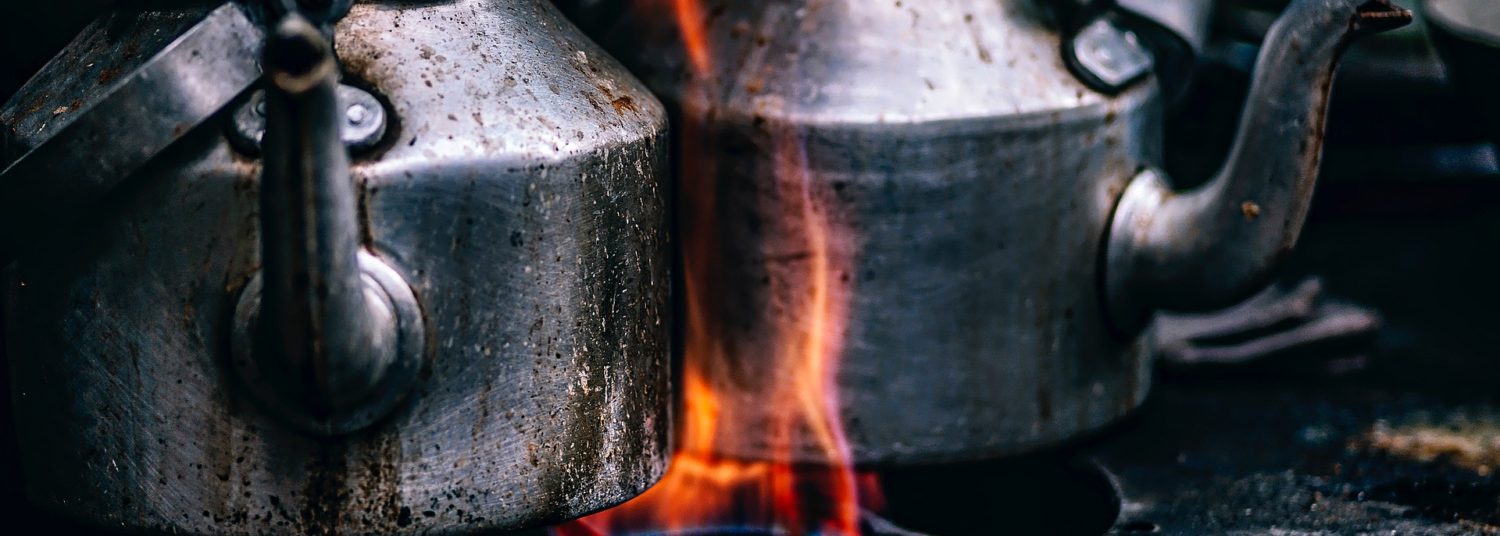What I Liked
This recipe was a delightful blast from the past. Instead of calves tails, you will need to use oxtails, unless you have a trusty butcher in town who can get the ingredient for you. The recipe has you braise and then stew the calves tails. I loved the tender, almost silky, texture of the calves tails near the end of the braise. The herbs produced an aromatic flavor that suited the beef perfectly. This was an impressive dish that would do very well on many restaurant menus. It was unique and introduced me to an ingredient I wouldn’t normally reach for.
Equipment Worth Using
For my braise I used a dutch oven. I also used a fine mesh strainer to strain off the braising liquid after the cook. So much flavor is incorporated in that liquid it is a shame to waste it. It makes a phenomenal gravy to be used over the meat with some veggies or possibly potatoes. If you don’t have a dutch oven, I’d highly recommend it. There are a wide range of uses for one beyond braising. You can get a dutch oven or strainers here and here.
Original Recipe for Calves Tails From 1759
Useful note: Rocombole is a relative of garlic. Substitute garlic. The spelling was the exact spelling from the 1759 recipe.
Cut the tails into two or three pieces, and you must stew these in a braize, and cut the carrots into neat genteel pieces, blanch them a few minutes, take the tails out, and soak the fat well off, put them into a stew-pan, with a ladle or two of culls, carrots, and a bunch of basil, onions, thyme and parsley, pepper, salt, a blade of mace, and a clove of rocombole, stew all till your carrots are tender, sprinkle in a little minced parsley, take out the rocombole and herbs, add the juice of lemon or orange, and send it to table.
Updated Method
The details are sparse in this recipe on how to cook the oxtail in a braise. I improvised, and came up with my own braise. I heated a dutch oven on medium heat for 10 minutes to allow the pan to get super hot. I added a splash of olive oil and then added the oxtail. Before adding the oxtail to the pan I made sure to salt and pepper each piece generously.
Once I had a good sear on both sides of the oxtail, I removed them from the pan and added the aromatics. For this dish I added 2 carrots and half an onion chopped up. I let those cook down in the pot until they started to caramelize. Next, I added 2 cloves of garlic and deglazed the pan with 4 cups of beef stock. I then added a generous amount of thyme, basil, and parsley, that I shredded in my hands. I placed the pan in the oven at 275 for 5 hours.
When the oxtails were finished braising, I removed them from the pan and strained off the remaining liquid to use in the sauce. This is where the recipe had me put everything back in a pot and stew with carrots, onions, and herbs for another stretch of time. Finishing with a squeeze of orange or lemon. If you insist on adding citrus at the end, I’d add orange. I think it is a better fit with the strong flavors developed during the braise. However, I think you can stop the recipe at the braise and have a delightful meal. The second stew, and addition of citrus, are unnecessary in my opinion.
What I Learned
 Calves tails can be notoriously hard to find. However, an oxtail accomplishes the same taste and texture and is a fitting substitute. I honestly believe our modern palates are quite different from the palates in 1759. The recipe calls for many wonderful herbs, such as thyme and basil. However, the overall taste got thrown off at the end with the addition of the mace and the lemon. The addition of those ingredients didn’t alter the amazing taste and texture of the oxtail. However, it ruined the sauce in my opinion. It took this perfectly savory herbaceous broth, and added unnecessary flavors. In the end, it appears less is more.
Calves tails can be notoriously hard to find. However, an oxtail accomplishes the same taste and texture and is a fitting substitute. I honestly believe our modern palates are quite different from the palates in 1759. The recipe calls for many wonderful herbs, such as thyme and basil. However, the overall taste got thrown off at the end with the addition of the mace and the lemon. The addition of those ingredients didn’t alter the amazing taste and texture of the oxtail. However, it ruined the sauce in my opinion. It took this perfectly savory herbaceous broth, and added unnecessary flavors. In the end, it appears less is more.
Nonetheless, the recipe is a keeper. The combination of herbs and spices I used in the initial braise was amazing. In future renditions I will stop right there at that step. I think a further stew is unnecessary. If I were making this today, I’d roast the carrots and make a delicious gravy out of the braising liquid. I’d omit the mace and lemon. Finally, I’d plate the whole dish with a side of mashed potatoes. I’m an Idaho boy and potatoes go with everything.
Overall, this recipe packed big flavor and intriguing textures into the humble oxtail. It took a fatty piece of meat and turned it into a melt-in-your-mouth delight. I seriously can’t remember eating beef that had such a velvety and tender texture. You have to make this dish!
Recipe Reference
Complete System of Cookery, By William Verral, Master of the White-Hart Inn in Lewes Sussex, Published in 1759.


